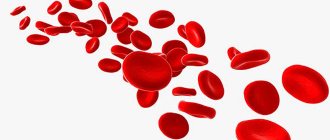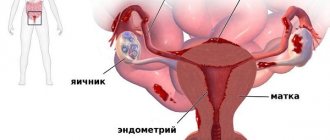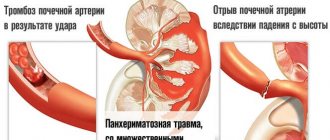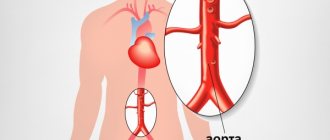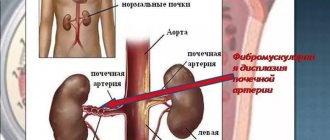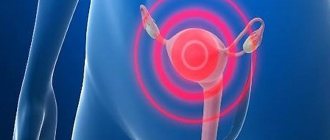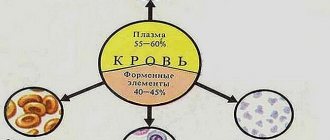The necessary materials to stop bleeding may not always be available. If a large arterial vessel is damaged, failure to provide assistance threatens the victim with large blood loss, even death.
Therefore, finger pressure of the arteries may be temporary, but the only way out in the situation until medical help arrives.
Immediate compression of a bleeding vessel is resorted to not only at the scene of an accident, but also during surgery in case of damage to the arterial trunk. One of the surgeons presses on the suspected rupture site, the other ligates the artery above or applies a clamp.
Places of compression of the main arteries
What you need to know to carry out pressing
It is impossible to squeeze the vessel between your fingers because:
- it is not visible at all in a bleeding wound;
- At the same time, contaminated scraps of clothing and bone fragments may surround the site of the lesion.
Therefore, during arterial bleeding, the main afferent (main) vessel is compressed not in the wound, but above it - “along.” This reduces blood flow to the injury site. Not everyone knows anatomy well. The person providing assistance should only be familiar with the location of the main pressure points.
They are not chosen arbitrarily, but in accordance with the direction of the vessels and the nearest anatomical bone formations. For compression to be effective, the artery must be clamped on both sides.
The method is completely inapplicable when a bone is fractured at the point of supposed compression.
Since bleeding requires emergency care, the following rules should be followed:
- delay is dangerous for the life of the victim, so the condition is assessed instantly (type of pulsating wound);
- if necessary, you can tear or cut part of the victim’s clothing, this will still have to be done to examine the wound;
- methods of compression are recommended either only with the thumbs, or by wrapping the hand so that the thumb is located at the desired point, however, after 10 minutes the rescuer may experience cramps and pain in the hands, so in practice one has to adapt and press with a fist;
- if the origin of the bleeding is unclear, then it is allowed to press with your palms on the wound itself until the location of the damage is determined (this is what you do when you are wounded in the stomach);
- It is necessary to maintain pressure until the pressure bandage is applied; if after this the bleeding intensifies, the pressure will have to be repeated.
Let's look at specific pressure points.
What can cause bleeding?
In the clinic, there are two types of bleeding: from mechanical or pathological damage.
The first indicates trauma to the vessel wall due to fractures of nearby bones or injury from any object. Common causes of bleeding from the arteries include:
- Injuries resulting from road accidents.
- When an artery is damaged, the cause of bleeding does not play a major role. In any case, it is necessary to provide first aid as quickly as possible and contact qualified specialists. Wounds inflicted by piercing objects.
- Different types of hemophilia.
- Liver cirrhosis, hepatitis.
- Diabetes.
- Vascular damage caused by bacterial toxins and viral infections.
When a large artery is damaged, centralization of blood circulation occurs - a condition in which blood moves away from the extremities, concentrating in the area of vital organs - lungs, brain, heart. This is a physiological phenomenon aimed at emergency life support. It manifests itself as pallor and cyanosis of the extremities, which cease to be supplied with blood as usual.
Why is arterial bleeding most dangerous?
Arterial blood is the main supplier of oxygen to all organs.
Serious blood supply threatens ischemia, that is, oxygen starvation, of certain parts of the body. Organs like the intestines can go without air for tens of minutes, but irreversible changes occur in the brain and heart after just 6 minutes of fasting.
Brachial artery
The closest point lies between the shoulder muscles.
- The victim's hand should be raised or placed behind his head.
- It is more convenient to be behind the patient.
- The vessel is clamped with four fingers from the outside or from the inside.
- The depression between the muscles below the shoulder joint is felt at 1/3 of the shoulder and this place is firmly pressed against the bone.
Pressing the brachial artery from the front (a) and back (b) positions
How to correctly diagnose internal bleeding
If it is not so difficult to determine the diagnosis with external bleeding, then with internal bleeding this is not the case. This will require certain knowledge, because the blood does not come out immediately, but after some time.
Thus, pulmonary hemorrhage is accompanied by hemoptysis, the flow of foaming blood from the nose/mouth. Esophageal or gastric bleeding is accompanied by vomiting blood (sometimes “coffee grounds”). If bleeding occurs in the stomach, duodenum, or biliary tract, this entails the appearance of tarry stools.
If bleeding occurs in the rectum/colon, this is accompanied by the appearance of raspberry, cherry, scarlet-colored blood in the stool. Kidney bleeding turns the victim's urine scarlet.
It is worth noting that with visible internal bleeding, bleeding may not appear immediately, but after some time. Accordingly, the use of general symptoms and certain diagnostic methods for internal bleeding is extremely necessary.
Diagnosis of hidden internal bleeding is definitely considered difficult. In this situation, local symptoms are divided into two main groups:
- Detection of bleeding.
- Some changes in the functions of certain organs that have been damaged.
To identify bleeding, you should pay attention to some signs:
- Bleeding in the pleural cavity:
- percussion sound is dull over a certain surface of the chest;
- breathing weakens;
- the mediastinum shifts;
- respiratory failure is observed.
- Bleeding in the abdominal cavity:
- the stomach is bloated;
- peristalsis weakens;
- percussion sound is dull in sloping areas of the abdomen;
- Sometimes symptoms of peritoneal irritation are observed.
- Bleeding in the cavity of a particular joint:
- the joint increases in volume;
- the appearance of sharp pain;
- violation of direct joint function.
- Hemorrhage/hematoma:
- swelling can be determined;
- pain symptom in acute form.
What is blood pressure and in what units is it measured?
Finally, it is worth noting that blood loss in the event of bleeding is not as terrible and dangerous as a significant change in the functions of certain organs. An example is bleeding into the pericardial cavity, which entails pericardial tamponade (in this case there is a sharp decrease in cardiac output, cardiac arrest), although the amount of blood loss is very small.
Carotid artery
Pressure of the carotid artery is required for bleeding from the vessels of the head, submandibular region, and upper neck. The situation is complicated by the impossibility of applying a circular pressure bandage to the neck, because the victim will suffocate.
Therefore, pressing is carried out on the wounded side with the thumb, when the rest are located on the back of the victim’s head, or with four fingers when approaching from behind. It is important to take into account the direction of the blood through the carotid artery: it is clamped below the site of injury.
In these ways the carotid artery is pressed
The desired point is located in the middle of the anterior surface of the neck muscle. Turn the wounded person's head in the opposite direction and it will be clearly visible. The artery is pressed against the spinous processes of the vertebrae.
LiveInternetLiveInternet
Temporal artery
press the 1st finger (thumb) to the temporal bone in front of the auricle 1-1.5 cm from it for bleeding head wounds.
Mandibular artery
press with the 1st finger to the corner of the lower jaw when bleeding from wounds located on the face.
A very large vessel is the common carotid artery
. It runs along the front of the neck to the side of the larynx. This artery is pressed below (closer to the heart) its damage to the cervical vertebrae. Then apply a pressure bandage, under which a thick cotton roll made of bandage, cotton wool or napkins is placed on the damaged artery.
Subclavian artery
pressed against the first rib in the fossa under the collarbone when the bleeding wound is located high on the shoulder, in the area of the shoulder joint or in the armpit.
When the wound is located in the middle or lower third of the shoulder, the axillary artery
to the head of the humerus, for which, resting with the first finger on the upper surface of the shoulder joint, the remaining fingers compress the arteries.
Brachial artery
pressed against the humerus on the inside of the shoulder on the side of the biceps muscle if the bleeding wound is located in the lower third of the shoulder or on the forearm. The person providing assistance holds the damaged surface with his left hand, and with the first finger of his right hand he compresses the artery, resting the other fingers on the outer surface of the shoulder.
Radial artery
pressed against the underlying bone in the wrist area at the 1st finger in case of damage to the arteries of the hand.
Femoral artery
pressed in the groin area to the pubic bone by pressing with a clenched fist (if the femoral artery is damaged in the middle and lower third).
In case of arterial bleeding from a wound located in the lower leg or foot, the popliteal artery
in the area of the popliteal fossa, for which the thumbs are placed on the front surface of the knee joint, and the rest press the artery to the bone.
On the foot, you can press the arteries of the rear
foot, then apply a pressure bandage to the foot, and for other arterial bleeding, apply a tourniquet to the lower leg area.
Finger pressure on the artery requires considerable effort and can last no more than 15-20 minutes, even if it is done by a physically strong and well-trained person. Therefore, immediately applying finger pressure to the vessel, you must quickly apply, where possible, a tourniquet or twist and an arrow bandage.
Bleeding from the hand or foot
Typically, bleeding from the vessels of the hand and foot is not life-threatening. But to reduce blood loss and while preparing a pressure bandage, you can apply finger pressure. The limb should be elevated. The hand is compressed with a circular grip in the middle third of the forearm. On the foot, it is necessary to press the vessels from the back side.
Pressing the artery requires strength from the first aid provider, so you need to try to attract the attention of others and call an ambulance. At the same time, you do not need to think about observing the rules of asepsis and antisepsis, washing your hands, or disinfecting your skin. Losing time aggravates the victim's condition.
A rescuer, providing assistance without gloves, exposes himself to the risk of contracting blood-borne infections (viral hepatitis, AIDS) from the victim. You need to take this into account and undergo the necessary laboratory tests at the clinic.
Arterial bleeding: signs and types
Arterial bleeding is diagnosed when an artery ruptures, the main function of which is to transport oxygen-rich blood from the heart to human tissues and organs.
Hemorrhage from arteries can be external or internal. In the first case, it is easy to diagnose blood loss: there is an outflow of blood from the human body into the external environment, and a “puddle” of blood quickly forms next to the victim.
Internal bleeding is characterized by blood leaking into tissues or hollow areas of the body. In turn, internal hemorrhage, depending on the presence of indirect signs, can be obvious or hidden.
In the first case, blood also remains inside the victim’s body, but the following signs allow it to be quickly diagnosed:
- black tarry stools;
- vomiting blood, urine, or diarrhea;
- hemoptysis.
With hidden hemorrhage, blood inside the body goes unnoticed. The following symptoms indicate the occurrence of such a dangerous condition in the victim:
- rapid breathing with disturbed rhythm;
- tachycardia with a heart rate of 140-150 beats per minute;
- nausea or vomiting;
- strong thirst;
- tremor of the limbs;
- pre-fainting state.
The skin becomes very pale, the lips and nasolabial triangle acquire a bluish tint.
With massive internal bleeding, the victim’s facial features become sharpened and the eyes appear sunken.
Arterial bleeding differs from venous and capillary bleeding in color, blood composition and flow intensity. It can be visually distinguished by the following characteristics:
- the blood is bright scarlet in color and has a rather liquid consistency;
- blood flow pulsates;
- blood pressure drops;
- below the wound site the pulse is almost not palpable;
- the skin in the area of injury quickly turns pale.
The pressure in the arteries is significantly higher than in the veins. The first obvious sign of arterial bleeding is a high rate of blood flow, which often gushes out like a fountain.
Arterial bleeding is rightfully considered the most life-threatening. In the absence of the necessary help, the injury provokes a rapid deterioration in the victim’s well-being. Large blood loss leads to a decrease in temperature and disruption of the blood supply to internal organs. The amount of oxygen reaching the brain decreases in proportion to the deterioration of blood flow. This process is accompanied by hypoxia and loss of consciousness.
How to give first aid correctly
The procedure for providing first aid is directly related to the anatomy of the human body. Arteries are very elastic, so these blood vessels need to be pressed against the bone, otherwise they can get lost in the soft tissue, and the wound will continue to bleed. Therefore, ligation of the femoral artery is considered the most difficult.
In case of arterial bleeding, the artery should be pressed above the wound site to stop the flow of blood from the heart. However, this rule does not apply to neck and head injuries. In such a situation, pressure should be applied below the wound on the side of the heart.
Most of all, a person’s life is threatened by ruptures of the femoral and cervical arteries.
2.3. Ways to stop bleeding
Various compensatory mechanisms of the body help stop bleeding from small arteries and veins, as well as capillaries on their own, preventing significant bleeding of the body.
In addition to them, reducing the lumen of the thrombosed vessel and screwing the damaged intima inward to form a natural valve help stop bleeding. In this process of hemostasis, a reflex decrease in blood flow in the damaged vessel, a drop in blood pressure and the formation of a blood clot are essential.
When large arteries are damaged, bleeding does not stop on its own, since a copious stream of blood flowing out under high pressure washes away blood clots and prevents the formation of a blood clot. To prevent the danger of blood loss in such cases, emergency stoppage of bleeding is necessary. Temporary (preliminary) and definitive methods of stopping bleeding are used.
